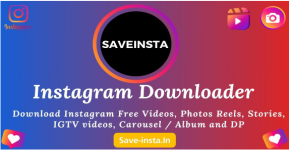 Launch apps instantly. Claim $200 credits on DigitalOcean
Launch apps instantly. Claim $200 credits on DigitalOcean
Understanding The Preferred File Format For Embroidery Logo Digitizing
Written by Embroidery Digitizing » Updated on: March 12th, 2024

In the world of custom apparel and branding, embroidery plays a crucial role in translating logos and designs onto fabrics. To achieve high-quality results in embroidery, it's essential to comprehend the preferred file formats for embroidery logo digitizing. This process involves converting a design into a format that embroidery machines can understand and execute accurately.
The Significance of Logo Digitizing
Logo digitizing holds immense significance in the realm of custom apparel and branding. It is the transformative process that bridges the gap between a visual concept and its manifestation through embroidery. This crucial step involves translating intricate designs into a language that embroidery machines can comprehend, deciphering details like stitch types, directions, and densities. The success of the final embroidered logo heavily relies on the quality and appropriateness of the initial file format provided to the digitizer. Logo digitizing not only ensures accurate replication of brand logos but also plays a pivotal role in maintaining the integrity of the design throughout the embroidery process. The precision and attention to detail involved in logo digitizing for embroidery contribute significantly to the overall quality of the embroidered product, making it a key aspect in the world of customized and professional branding.
Common File Formats for Embroidery Digitizing
Embroidery machines typically recognize specific file formats to ensure precise rendering of designs. While there are various formats used in graphic design, not all are suitable for embroidery digitizing. The preferred file formats include:
1. Vector Formats (AI, EPS, PDF)
Vector formats are highly favored in the world of embroidery digitizing. Files in AI (Adobe Illustrator), EPS (Encapsulated PostScript), and PDF (Portable Document Format) are composed of mathematical equations, ensuring scalability without loss of quality. Vector graphics allow digitizers to manipulate elements with precision, resulting in clean and sharp embroidery designs.
2. DST (Tajima Embroidery Format)
DST is a specific embroidery file format widely supported by various embroidery machines, especially those from Tajima. This format contains information about stitch types, colors, and coordinates, making it a standard choice for professional embroidery digitizing.
3. SVG (Scalable Vector Graphics)
SVG files, commonly used in web design, have gained popularity in embroidery digitizing. Similar to other vector formats, SVG files provide the advantage of scalability and maintain clarity even when resized. Some digitizers prefer SVG files as they offer a streamlined conversion process.
4. JPEG and PNG (Raster Formats)
While less ideal than vector formats, JPEG and PNG files are occasionally used in embroidery digitizing. However, these raster formats lack the scalability and precision of vectors, potentially leading to a loss of detail in the final embroidery.
Tips for Providing Optimal Files for Digitizing
To ensure a seamless digitizing process and achieve the best embroidery results, consider the following tips when providing files to a digitizer:
1. Submit High-Quality Images
Start with a high-resolution image of your logo to maintain clarity during the digitizing process. The more details the digitizer has to work with, the better the final embroidery will look.
2. Choose Vector Graphics Whenever Possible
Opt for vector graphics whenever feasible. Vector formats provide the necessary flexibility and precision for digitizing intricate designs accurately.
3. Specify Thread Colors and Types
Clearly communicate the intended thread colors and types in your design. This information helps digitizers match the colors accurately, ensuring the embroidered logo aligns with your brand identity.
Conclusion
Understanding the preferred file format for embroidery logo digitizing is paramount to achieving exceptional results in the world of custom apparel. By providing high-quality vector files and communicating essential details, you set the stage for a seamless digitizing process that brings your brand's vision to life in vibrant and precise embroidery.
Copyright © 2024 IndiBlogHub.com Hosted on Digital Ocean








Post a Comment
To leave a comment, please Login or Register